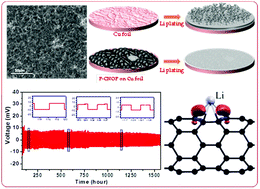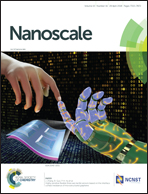F-Doped carbon nano-onion films as scaffold for highly efficient and stable Li metal anodes: a novel laser direct-write process†
Abstract
Li metal is the most promising choice for anode in high-energy rechargeable batteries, but the dendrite growth upon cycling leads to safety concerns and poor cycle life. Herein, we demonstrate a novel and scalable approach for direct writing of a thin layer of carbon nano-onions on copper substrate to stabilize the Li metal anode and prevent the dendrite growth. The F-doped carbon nano-onion film (F-CNOF) scaffold enables reversible electroplating for over 1500 hours (300 cycles) with a coulombic efficiency of ∼100%. The F-CNOF is capable of depositing Li equivalent to a capacity of 10 mA h cm−2 (gravimetric capacity 3218 mA h g−1) at 1 mA cm−2, operating at a high current density of 6 mA cm−2. More importantly, these features of long-term cyclic stability and excellent rate capability are attributed to the very high curvature due to nano dimension (∼108 m−1) of the nano-onions that develop a very uniform Li flux due to the negative surface charge, thus preventing the dendrite formation. We have also shown via first-principles DFT calculations that the high curvature achieved herein can significantly enhance the binding energy of Li to the carbon surface, which helps to improve lithiophilicity. A full cell fabricated using Li4Ti5O12 as the positive electrode showed cyclic stability of 450 cycles.



 Please wait while we load your content...
Please wait while we load your content...